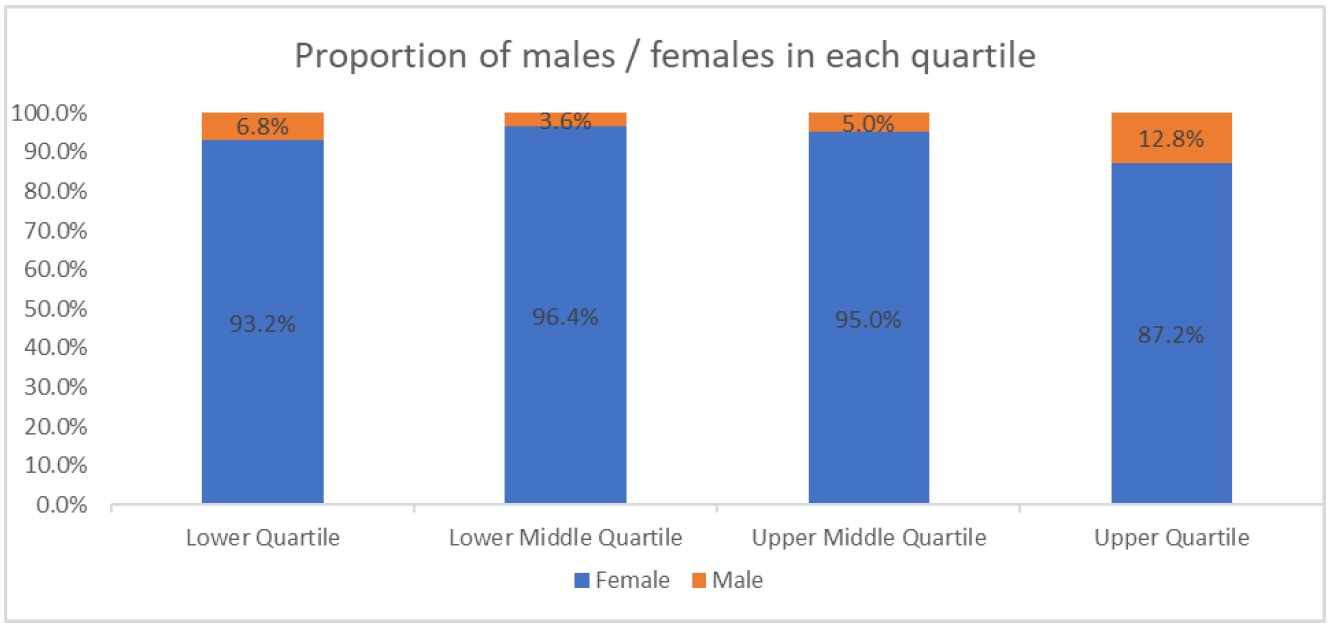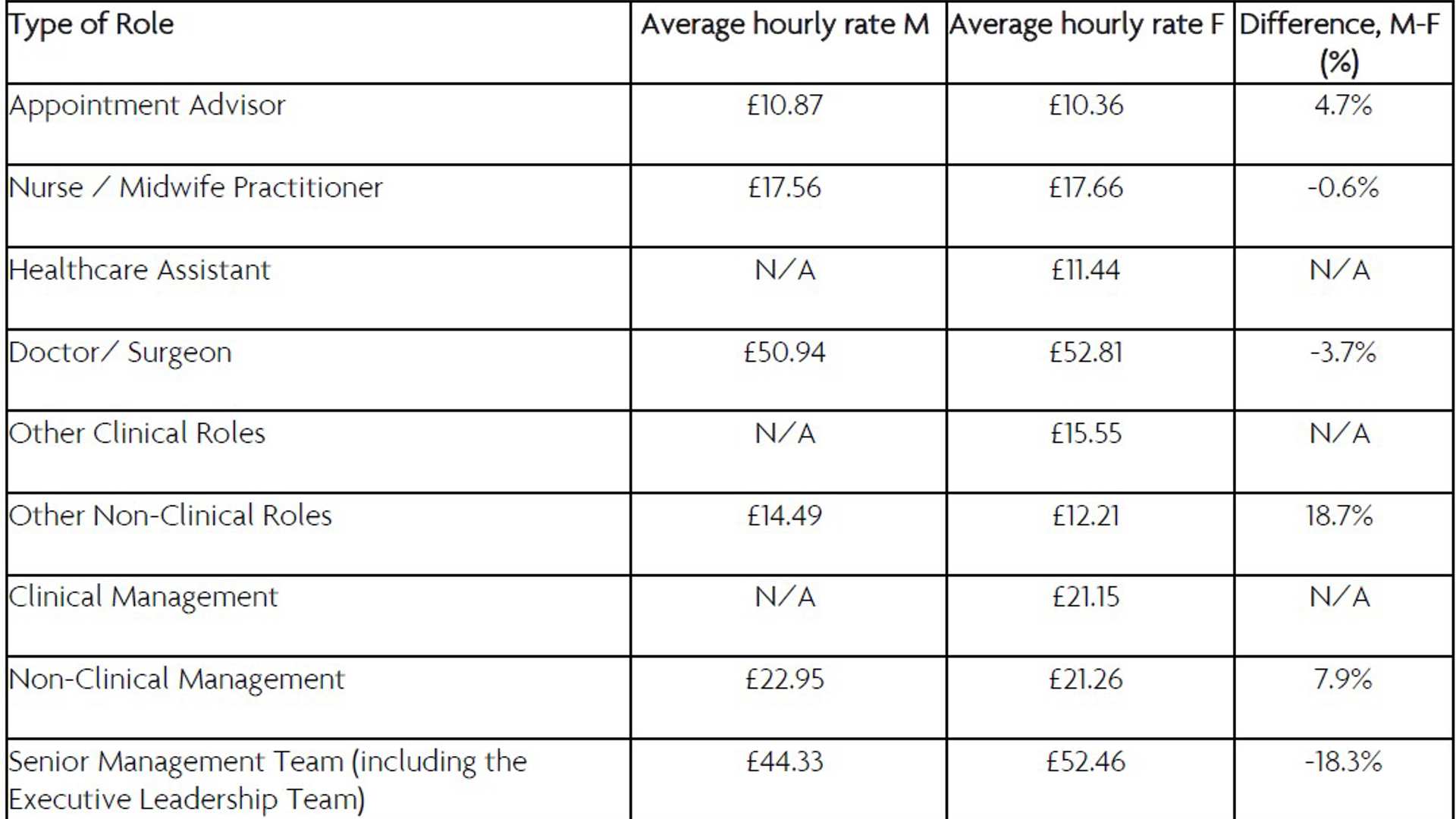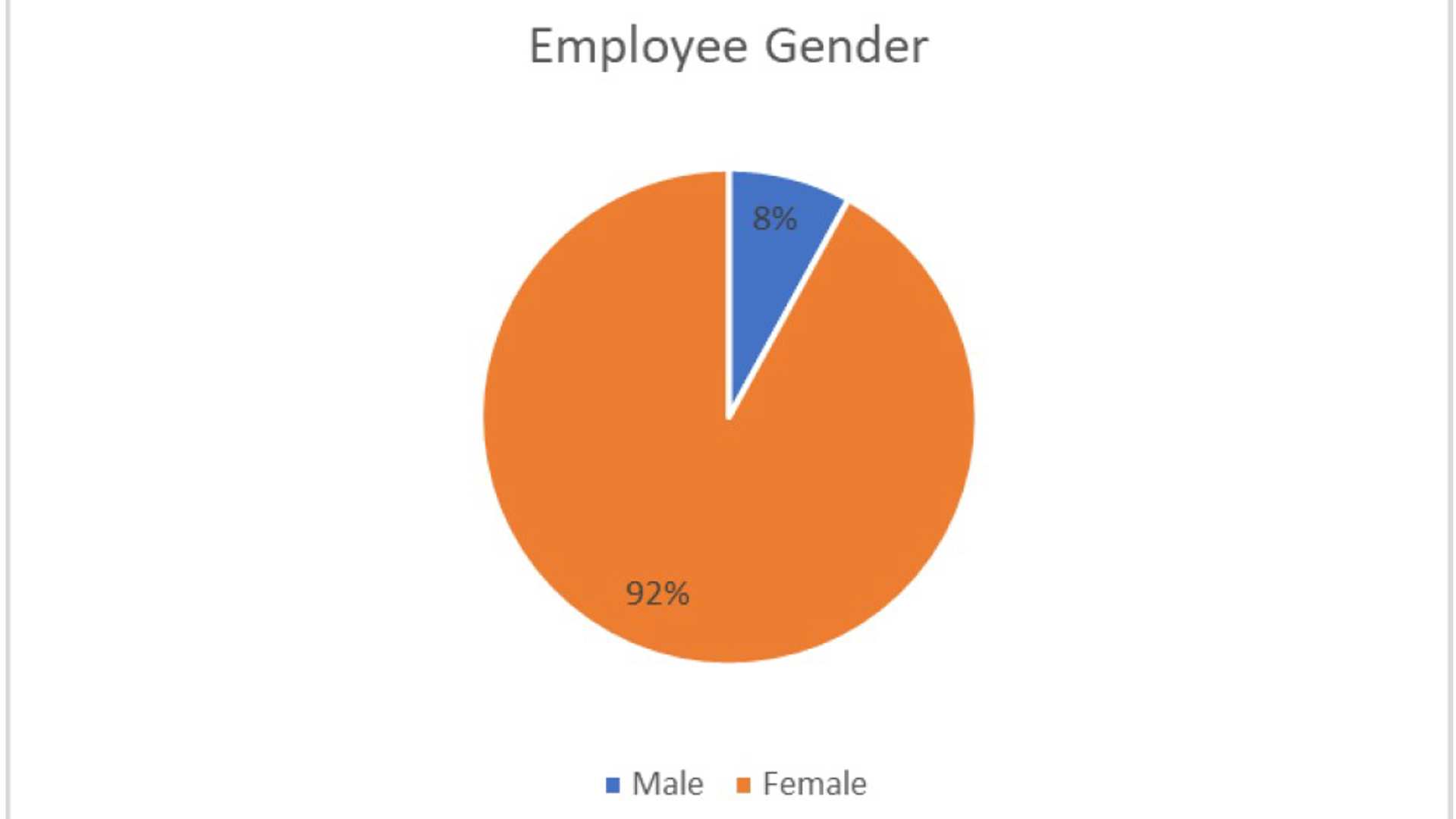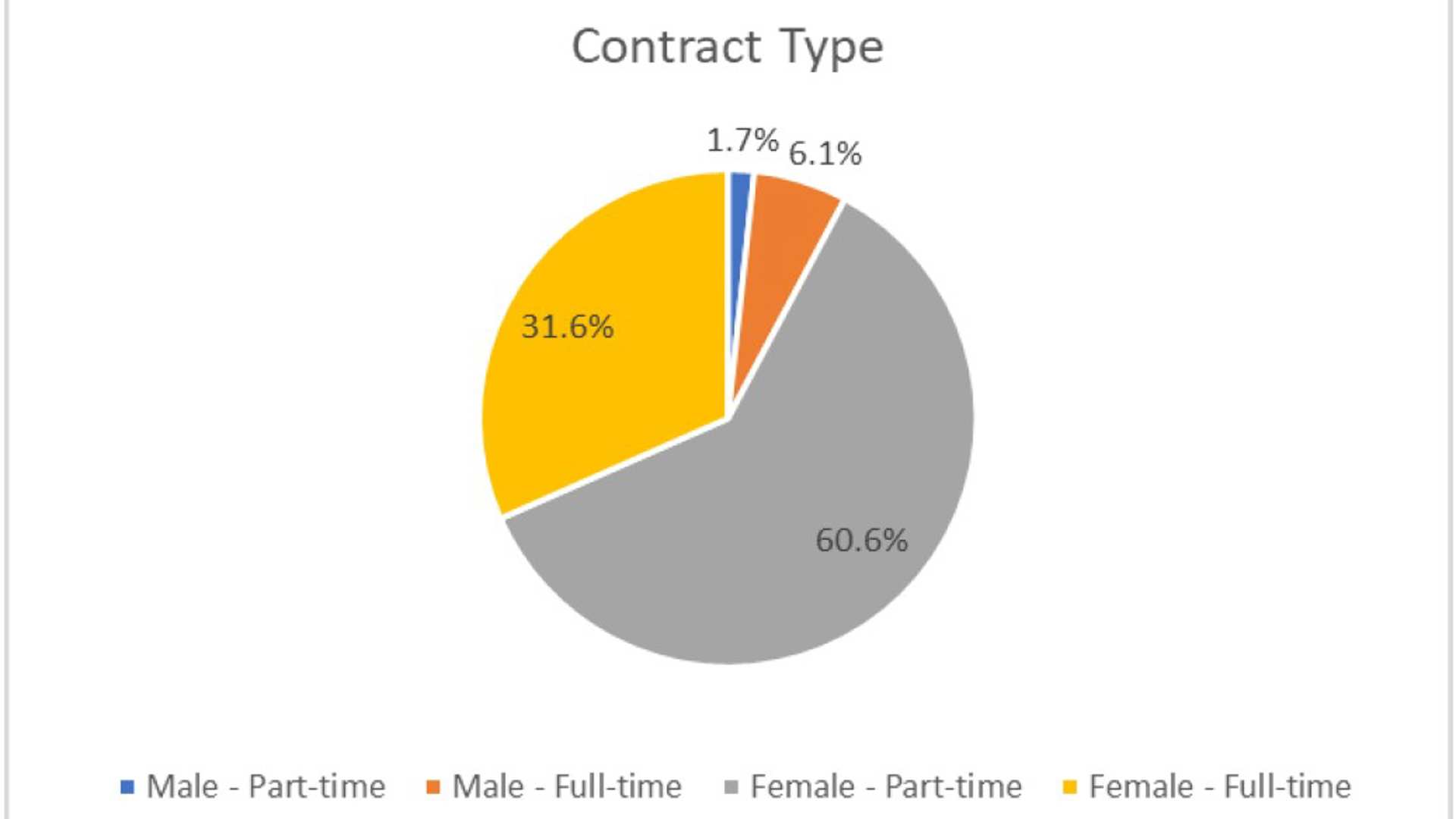BPAS’s data for 2021 and all previous years is as follows:

The graph demonstrates the proportional representation of gender in each pay quartile for 2021.

The name and job title of the senior person who signed these calculations off, and who is responsible for the data, will be published alongside the statistics.
We are also required to add this information to our own website, which provides us with the opportunity to provide more detail and context to our results. Details of inclusions / exclusions related to these calculations can be found on Appendix 1a below.
Appendix 1a – Detail of Calculations
Workers - Inclusions and Exclusions
| Group of Workers | Included/Excluded from Calculations | Commentary |
| Contracted employees | Included | |
| Casual Workers | Excluded | The ACAS guidance refers to ‘employees that do not receive basic pay’ being included, however Casuals are not considered to be employees. |
| Self Employed Doctors working under Practising Privileges | Excluded | We are invoiced for the work these individuals undertake and this is by session rather than against a specific number of hours. They are not paid through the payroll. We have limited control over the rates we are charged under these agreements. |
| Agency workers | Excluded | ACAS guidance confirms that agency workers are part of the calculation to understand if we are a big enough business to warrant publishing the pay gap; but are not included in the actual pay calculations. |
| Those on Maternity leave (SMP) or sick leave receiving no pay | Excluded | In line with ACAS guidance. |
| Those who had left prior to 5th April 2021 | Excluded |
Pay – Inclusions and Exclusions
| Pay Element | Included/Excluded from Calculations | Commentary |
| Basic salary | Included | In line with ACAS guidance |
| London Weighting | Included | In line with ACAS guidance |
| Overtime | Excluded | In line with ACAS guidance |
| Allowances | Included | In line with ACAS guidance |
| Car allowance | Included | In line with ACAS guidance |
| LARC payment | Included | In line with ACAS guidance |
| Premium Pay | Included | In line with ACAS guidance |
| Bonus | Not applicable | |
| Trainer honorarium | Excluded | Considered immaterial as applies to only <5 individuals. |
Other data principles applied
- Where individuals have two different hourly rates (for two different jobs) these have been averaged. There are very few individuals with significantly differing rates.
Appendix 2 - Narrative
BPAS is not only committed to protecting and extending women’s reproductive rights and choices; but also to supporting women’s rights in a much broader sense. BPAS takes the Gender Pay Gap seriously, and whilst we are pleased to note that our median pay gap has declined for the 5th year running, we are committed to understanding (beyond the headline statistics) why the mean gender pay gap has opened up again.
It is always important to note that gender pay reporting is different to equal pay. The (legal) right to equal pay relates to men and women receiving equal pay for work of equal value – a principle which we absolutely hold true and ensure is embedded into our gender-neutral pay structures.
Gender pay figures, however, show the difference in average pay between all men and women within the whole workforce. This may mean that where the higher paid sections of the workforce are male-dominated, or if there are proportionately more men in senior roles than in less senior roles, the gap between what men are paid on average and what women are paid on average, is greater.
At BPAS, we believe that there are a number of factors contributing to our pay gap, and we have therefore taken the opportunity to look into some of the detail and context around our figures, provided in our report below.

BPAS considers that the above percentages are more accurate reflections of the pay gaps we have and which are within our control to address. There are 6 sections above that demonstrate pay gaps between genders at BPAS. However, 3 of these areas are ‘reverse’ pay gaps – where female employees on average are paid more than their male colleagues. These figures reflect our female-dominated workforce.

Our Board of Trustees, whilst not remunerated, is 75% female / 25% male, and our Strategic Leadership Team is 77% female / 23% male.

At the time of calculating the statistics, our workforce was 92% female and 8% male. We have a large number of part time positions within our organisation, the vast majority of which are nurses / midwives. At the time of reporting our workforce was made up as follows:

Our Pay Structure
BPAS operates a formal job evaluation process, and we apply a graded pay structure for the vast majority of those roles (where job roles are attached to specific pay bands). Our clinical roles are benchmarked against the NHS Agenda for Change pay rates; Doctor roles against NHS rates and independent health sector rates, and our non-clinical roles benchmarked against UK median pay rates.
For non-clinical roles, we benchmark against UK median pay rates, and naturally find that we need to reflect these higher market rates in order to be able to attract and retain the right people for our charity.
Our pay progression policy is based on competence assessment and length of service and is reviewed on a regular basis.
Pay in the Health Sector
Pay for nurses and midwives is largely determined by the NHS and has been historically relatively low and often suppressed by limits on public spending.
Summary and conclusion

Pulling all of the themes above together, we believe that our Gender Pay Gap is as a result of all of the following contributing factors:
- Vastly more women than men in nursing / midwifery roles UK-wide
- More men than women in doctor / surgeon roles UK-wide
- BPAS’ ability to offer mainly part time roles, particularly in the female dominated professions, and full-time roles in higher paid positions
We are confident that our gender pay gap is not unusual in the sector(s) in which we operate. Whilst the type of work that BPAS undertakes (and the service we provide) means that a more gender balanced workforce may be difficult to achieve, we will continue our efforts to embed equality, diversity and inclusion (EDI) into every policy and process; to raise awareness of flexible and part-time working for all genders; to encourage career development; and to ensure our colleagues have the right support and guidance to make gender inclusive decisions.
BPAS commits to:
- Continuing detailed analysis into different sections of our workforce, thus determining priority areas to focus on
- Continuing to ensure that equality is at the centre of our recruitment and attraction strategies, with a focus on ensuring that women are actively encouraged to apply for traditionally male-dominated roles (and vice versa for men)
- Regularly reviewing our Gender Pay Gap and benchmarking against similar organisations within the sector(s) we operate in
- Identifying further plans of action as more knowledge and understanding is gained.
This statement and the published information relating to our Gender Pay Gap is accurate.
Clare Murphy, Chief Executive Officer 04 May 2022
Lucy Moore, BPAS Trustee & Governance, Remuneration & Nomination Chair 04 May 2022




